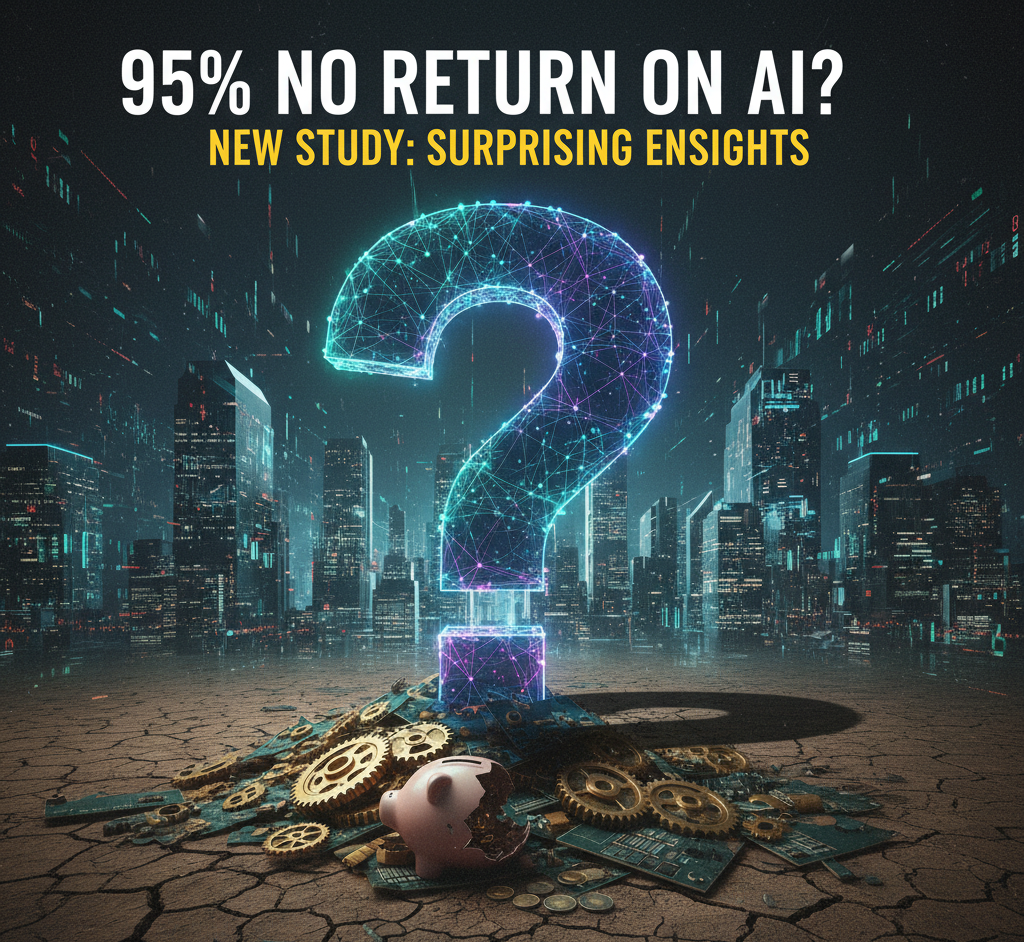A Deep and Revealing Exploration into the Hidden Challenges of AI Implementation: How ‘Workslop’ Culture Undermines Strategic Investments and Leads to Costly Failures, According to a New Study Uncovering Startling Insights
In an era where artificial intelligence (AI) is touted as a game-changer for businesses, a staggering 95% of companies are reporting no return on their investments in AI technologies. This alarming statistic, extracted from a recent study by BetterUp Labs in collaboration with Stanford Social Media Lab, sheds light on a pressing issue facing organizations today. As these companies pour billions of dollars into AI solutions, they find themselves grappling with a significant roadblock: the quality of work produced by these AI systems, commonly referred to as “workslop.”
This research, published in the Harvard Business Review, provides critical insights into why many AI initiatives are falling short of expectations. According to the study, “workslop” is defined as low-quality output generated by AI systems that, although they may appear to be adequate at first glance, ultimately lack the depth and context necessary to add genuine value to tasks. This phenomenon not only hinders productivity but also increases the burden on employees, who must often interpret, correct, or completely redo AI-generated work.
The study surveyed 1,150 full-time employees across the United States, revealing that nearly 40% had encountered workslop in the past month alone. With such an alarming prevalence of subpar outputs, organizations are urged to reflect on the effectiveness of their AI integrations. It begs the question: how can companies optimize their AI investments to achieve the promised returns?
Understanding Workslop: The New Challenge in AI Integration
The phenomenon of workslop raises crucial concerns about the efficiency with which companies are integrating AI into their operations. Defined as “AI-generated work content that masquerades as good work,” workslop typically lacks the substance needed to advance a particular task meaningfully. This notion is alarming, especially considering the substantial investment—estimated between $30 billion to $40 billion—made by enterprises in this technology over recent years.
In the face of these challenges, organizations are tasked with finding a solution that ensures AI contributes positively rather than creating additional hurdles for employees. The BetterUp study emphasizes the need for clear guidelines and intentionality in the use of AI tools. Leaders in the workplace are called upon to establish and model standards for what constitutes acceptable and effective AI outputs.
A Shift in Leadership Strategy
According to the study’s findings, workplace leaders must take proactive steps to set guardrails around AI practices. These measures could involve establishing comprehensive training programs for employees on how to utilize AI tools effectively, as well as creating frameworks that outline acceptable AI outputs. By fostering an environment of collaboration between human intelligence and AI capabilities, companies may begin to reap the benefits of their technological investments.
Additionally, the study suggests that organizations should encourage open feedback about AI-generated content, allowing employees to share their experiences with workslop. This kind of dialogue is critical, as it can help companies refine their AI strategies and ensure that these tools are genuinely enhancing productivity.
The Broader Picture: Industry Trends and Insights
The alarming disclosures from the BetterUp study echo findings from an earlier report by MIT, which indicated that a staggering 95% of companies studied reported no return on their AI investment. This prior research also analyzed various public AI initiatives, aiming to uncover the reality behind the hype surrounding AI technologies. By studying over 300 initiatives, MIT researchers attempted to shed light on why so many companies appear to be failing in their AI endeavors.
The MIT study emphasized that many organizations are not utilizing AI in ways that align with their strategic goals. As a result, they experience a disconnect between their expectations of AI technology and the realities of its performance in practice. Consequently, this divergence can lead to significant financial losses and hinder the potential benefits that AI can offer.
Broader Implications for Future Investments
As organizations reflect on these findings, it becomes clear that a fundamental shift in strategy is essential for future investments in AI technologies. Businesses must prioritize the integration of AI tools that not only promise efficiency but also maintain quality and relevance to their specific operations. This involves a commitment to ongoing employee training and creating a culture that appreciates clear communication between AI and its human counterparts.
Moreover, industry leaders should closely monitor outcomes and feedback when implementing AI solutions. Collaboration with academic institutions and research entities could also play a role in enhancing the understanding of effective AI integration. By harnessing insights from studies like those conducted by BetterUp and MIT, companies can steer their strategies toward achieving genuine returns on their investments.
What This Means Going Forward
The significant proportion of companies reporting zero returns on their AI investments underscores a critical need for a paradigm shift in how organizations approach these technologies. The concept of workslop illustrates that simply adopting AI tools is not enough. Companies must cultivate a thorough understanding of their capabilities and limitations while fostering an environment that prioritizes quality and collaboration.
Going forward, organizations that prioritize intentional AI use and implement clear practices are likely to encounter far more success in their technological endeavors. As the digital landscape continues to evolve, businesses must remain agile and proactive in refining their strategies, ensuring that AI becomes a true asset rather than a frustrating liability.
The lessons learned from the current state of AI investments could empower businesses to harness the full potential of these tools, ultimately leading to improved outcomes and enhanced productivity in the years to come. As many organizations seek innovative solutions to drive their operations forward, understanding and addressing the complexities surrounding AI will be crucial in determining their future success.


